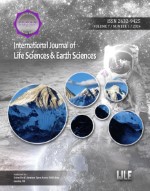Participation of coffee farmers in developing agrotourism
Keywords:
Coffee, farmer participation, participation degree, participation form, participation levelAbstract
Subak Abian Sari Boga developed agro-tourism because most of the villagers are coffee farmers. The journey of Kiadan Agrotourism has been quite long and there have been many problems in its development. So, it is necessary to analyze the level of participation of coffee farmers in developing Kiadan Agrotourism. The purpose of this research is to analyze the level of participation of coffee farmers in developing Kiadan Agrotourism in Subak Abian Sari Boga, Petang District, Badung Regency. This research was conducted at Kiadan Agrotourism, selected by purposive sampling or deliberately, carried out since April 2021. The sample in this study was determined by the random sampling method, where the total sample was 40 coffee farmers. The data analysis method used in this study uses a descriptive qualitative method. Based on the results of the research and discussion that has been presented, it can be concluded that the level of participation of coffee farmers in developing Kiadan Agrotourism is in the very high category because the conditions of coffee farmers are very supportive of participation. The participation of coffee farmers is at the level of Citizen Power.
Downloads
References
Arida, S. (2009). Meretas jalan ekowisata Bali: proses pengembangan, partisipasi lokal, dan tantangan ekowisata di tiga desa kuno Bali. Udayana University Press.
Astiti, N. W. S., & Darmawan, D. P. (2024). Implementation of the empowerment model of female laborers on Arabica coffee processing industry in Bangli Regency, Bali Province. International Journal of Life Sciences and Earth Sciences, 7(1), 11-17. https://doi.org/10.21744/ijle.v7n1.2248
BPS Bali. (2013). Statistik Daerah Provinsi Bali Tahun 2013.
Bravo-Monroy, L., Potts, S. G., & Tzanopoulos, J. (2016). Drivers influencing farmer decisions for adopting organic or conventional coffee management practices. Food policy, 58, 49-61. https://doi.org/10.1016/j.foodpol.2015.11.003
Bungin, B. (2010). Penelitian Kualitatif: Komunikasi, Ekonomi, Kebijakan Publik, dan Ilmu Sosial Lainnya. Jakarta: Kencana.
Cano-Marquina, A., Tarín, J. J., & Cano, A. (2013). The impact of coffee on health. Maturitas, 75(1), 7-21. https://doi.org/10.1016/j.maturitas.2013.02.002
Cerdán, C. R., Rebolledo, M. C., Soto, G., Rapidel, B., & Sinclair, F. L. (2012). Local knowledge of impacts of tree cover on ecosystem services in smallholder coffee production systems. Agricultural Systems, 110, 119-130. https://doi.org/10.1016/j.agsy.2012.03.014
Dolisca, F., Carter, D. R., McDaniel, J. M., Shannon, D. A., & Jolly, C. M. (2006). Factors influencing farmers’ participation in forestry management programs: A case study from Haiti. Forest ecology and management, 236(2-3), 324-331. https://doi.org/10.1016/j.foreco.2006.09.017
Donovan, J., & Poole, N. (2014). Changing asset endowments and smallholder participation in higher value markets: Evidence from certified coffee producers in Nicaragua. Food Policy, 44, 1-13. https://doi.org/10.1016/j.foodpol.2013.09.010
Esquivel, P., & Jimenez, V. M. (2012). Functional properties of coffee and coffee by-products. Food research international, 46(2), 488-495. https://doi.org/10.1016/j.foodres.2011.05.028
Hasyim, H. (2006). Analisis Hubungan Karakteristik Petani Kopi Terhadap Pendapatan (Studi Kasus: Desa Dolok Saribu Kecamatan Paguran Kabupaten Tapanuli Utara).
Lastra-Bravo, X. B., Hubbard, C., Garrod, G., & Tolón-Becerra, A. (2015). What drives farmers’ participation in EU agri-environmental schemes?: Results from a qualitative meta-analysis. Environmental Science & Policy, 54, 1-9. https://doi.org/10.1016/j.envsci.2015.06.002
Quiroga, S., Suárez, C., & Solís, J. D. (2015). Exploring coffee farmers’ awareness about climate change and water needs: Smallholders’ perceptions of adaptive capacity. Environmental Science & Policy, 45, 53-66. https://doi.org/10.1016/j.envsci.2014.09.007
Sarjana, S. (2015). Dynamic capabilities in manufacturing. Journal of Entrepreneurship, Business and Economics, 3(2), 41-64.
Sarkawi, D. (2012). Pengaruh Jenis Kelamin Dan Pengetahuan Lingkungan Terhadap Penilaian Budaya Lingkungan (Studi Ex Post Facto Di Akademi Manajemen Informatika Dan Komputer Bina Sarana Informatika Jakarta). Cakrawala-Jurnal Humaniora, 12(2), 123-131.
Sekaran, U. (2011). Research Methods for Business: Metodologi Penelitian Untuk Bisnis, Buku 1.
Sudibyo, P. (2010). Distribusi Frekuensi. http://pramonosudibyo.files.wordpress. com/2010/11/distribusi frekuensi3.pdf.
Sugiyono, S. (2020). Metode Penelitian Kuantitatif, Kualitas dan R&D. Bandung: Alfabeta
Susila, I., Dean, D., Harismah, K., Priyono, K. D., Setyawan, A. A., & Maulana, H. (2024). Does interconnectivity matter? An integration model of agro-tourism development. Asia Pacific Management Review, 29(1), 104-114. https://doi.org/10.1016/j.apmrv.2023.08.003
Ukkas, I. (2017). Faktor-faktor yang mempengaruhi produktivitas tenaga kerja industri kecil kota palopo. Kelola: Journal of Islamic Education Management, 2(2).
Valdivia, C., & Barbieri, C. (2014). Agritourism as a sustainable adaptation strategy to climate change in the Andean Altiplano. Tourism Management Perspectives, 11, 18-25. https://doi.org/10.1016/j.tmp.2014.02.004
Published
How to Cite
Issue
Section
Copyright (c) 2024 International journal of life sciences and earth sciences

This work is licensed under a Creative Commons Attribution-NonCommercial-NoDerivatives 4.0 International License.
Articles published in the International Journal of Life sciences & Earth sciences (IJLE) are available under Creative Commons Attribution Non-Commercial No Derivatives Licence (CC BY-NC-ND 4.0). Authors retain copyright in their work and grant IJLE right of first publication under CC BY-NC-ND 4.0. Users have the right to read, download, copy, distribute, print, search, or link to the full texts of articles in this journal, and to use them for any other lawful purpose.
Articles published in IJLE can be copied, communicated and shared in their published form for non-commercial purposes provided full attribution is given to the author and the journal. Authors are able to enter into separate, additional contractual arrangements for the non-exclusive distribution of the journal's published version of the work (e.g., post it to an institutional repository or publish it in a book), with an acknowledgment of its initial publication in this journal.















